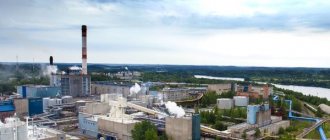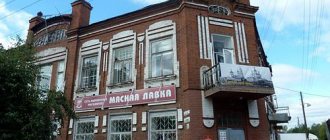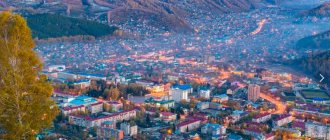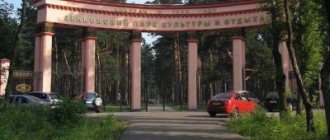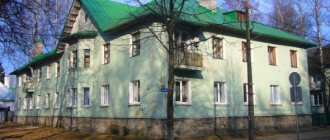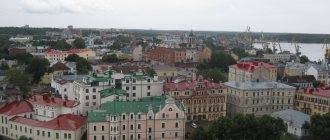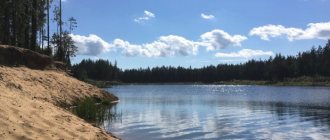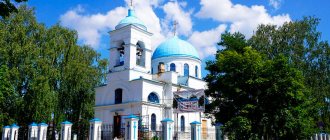The city of Vysotsk, Leningrad region, is a port city of Russia, located on the shores of the Gulf of Finland, on the island of Vysotsky. The city was renamed several times, it was Trogzund (until 1917), Uuras (from 1917 to 1948), and from 1948 - Vysotsk. This smallest town in terms of population is 30 kilometers away from the city of Vyborg and is a railway station. The city was previously closed, but is now open to the public. The area of the settlement is about 39 square kilometers. What is the history of the city? How does he live now? What attractions of the city attract tourists?
Historical sketch
The settlement was founded by Peter the Great, according to numerous sources. The first written mention of this area dates back to 1533.
During the Northern War in the 18th century, the entire territory of Finland became part of the Russian Empire. At the same time, the Vyborg province of St. Petersburg province was organized. Peter I came up with the idea of placing a fortification here; he founded a fortress, the purpose of which was to cover the approaches to the city of Vyborg from the sea. Thus, in the narrowest place of the Vyborg Bay, a fortification was built, which was named Trongsund (from the Swedish “trong” - “narrow”, “zund” - “strait”).
At the beginning of the 19th century, the Principality of Finland was formed, which was part of the Russian Empire.
After the October Revolution, the Finnish lands gained independence and became the state of Finland. The city was renamed Uuras (Finnish for “hardworking”). During this period of the settlement's history, a railway was built and work began on dredging the seabed to create a seaport from Uuras. In 1926, the Tyurisevya-Limatta railway was built. In the early 30s, dredging work was completed.
In 1939, the Russian-Finnish war began, after which, in 1940, a peace treaty was concluded, according to which part of the Vyborg province became part of the USSR. The acquired territory was divided, its northern part went to the Karelian Autonomous Soviet Socialist Republic, the city of Uuras became part of the Vyborg region.
During the Great Patriotic War, from the summer of 1941, the city was occupied by Finnish troops and liberated by the Soviet army in the summer of 1944.
In 1944, the area became part of the Leningrad region.
In the 40s, the village of Uuras was renamed Petroostrov, but in 1948 it was again renamed Vysotsk, in honor of the hero of the USSR Vysotsky Kuzma, who died a heroic death in these places.
At the same time, they began to restore the port on Vysotsky Island. Since the beginning of the 80s, the port was inoperative, then it gradually began to be used for loading coal, and since the mid-90s the port has had huge cargo turnover.
In the early 2000s, it built a transshipment complex and an oil terminal.
Primorskoye Highway
If you just need to quickly get from St. Petersburg to Vysotsk, then it is better, of course, to jump over the Fox’s Nose along the WHSD and go onto the Scandinavia highway. But! You and I are going on an exciting journey, right? Therefore, we choose Primorskoye Highway, right at the exit from the city.
This is one of the most picturesque routes in the northern direction. Just taking a breeze here is a pleasure. By car, motorcycle, bicycle. Which one is more pleasant? The Primorskoye Highway stretches from St. Petersburg all the way to Vyborg, which is why it is sometimes called the Nizhny Vyborg Highway.
The track is well equipped and has good surface. It meanders along the coast between pine forests, yellow beaches, huge boulders, old dachas, new villas and restaurants. The sun winks between the trees and it seems that even the seagulls are shouting after them “have a nice day!”
You will see through the window the famous Sestroretsky Razliv, the beaches of Komarovo, the Repin Penates, wave to Raymonda Dien, and drive across the resort Zelenogorsk, buried in flowers. And approximately, in the Molodezhny area, you will finally be able to turn on the gas. Yes, the area is popular, there are a lot of cars, traffic to Zelenogorsk on weekends... I would like to say difficult, but it would be more correct to say calm. We're on a walk.
| You may be interested: Between sky and water or one day near Priozersk |
But from Molodezhny, the resort part of the road ends and begins almost deserted. Everyone who dreamed only of a beach and a picnic had already stopped in Solnechny, Komarovo or crossed the Zelenogorsk park to Golden Beach. Further on there will be no less beaches, wild, clean, secluded, with sand combed by winds and waves and the usual muddy smell of the Gulf of Finland. In general, for those who are not lazy to get further away.
However, travelers are asked to pay attention to two pieces of advice:
- It’s better to go to the final point, and for us it’s the cape with the Trongsund fortress, and on the way back make stops to relax on the beach and explore other sights
- Don’t forget that the road is long, and the last gas station is just outside Sestroretsk. There is another one, in the area of the village of Sovetsky, almost before Vysotsky. No more gas stations were seen on Primorskoye Highway. And the distance from St. Petersburg to Vysotsk along the chosen road is about 230 kilometers
City today
The main economically important enterprises of the city of Vysotsk, Leningrad Region, are currently: the Port Vysotsky coal terminal and the Vysotsk-Lukoil oil terminal.
The city administration will pay great attention to the improvement of the territory. The city takes an honorable 3rd place in the ranking of the most comfortable settlements in the Vyborg region.
The city of Vysotsk, Leningrad region, is the smallest town in terms of population. 1120 people live here.
City cultural and educational institutions
Despite the fact that the town is very small, there is an elementary music school for children, painting and theater arts are taught in the Children's Creativity Center, a Children's Art School, the Stanislav Rostotsky Museum, and the “Station of Young Naturalists” operate.
There is a city library.
In the city there is only one kindergarten “Borovichok”, the only preschool institution where there is no waiting list.
Every year, students from the Vyborg School of Arts come to the city of Vysotsk, Leningrad Region, to practice.
There is its own musical group “Juice”, which tours throughout the Vyborg district of the Leningrad region.
On the territory of the city of Vysotsk there is a Park of Culture and Recreation, where all public and festive events are held.
Road trip to Vysotsk. Old fort and picturesque skerries
Content:
Located in the northwestern tip of Vysotsky Island, the settlement of the same name with the status of an urban settlement is, of course, famous not only for the number of people living here. The places here are marked with historical artifacts. Which testify to the glorious and heroic pages of the development of our Fatherland. Well, besides, it’s also very beautiful here. It was for this beauty and history that I set off in my car on my next journey.
Road to Trongsund Fortress. Primorskoye Highway
The choice of road on this journey was deliberate for me. By car you can get to Vysotsk from the Northern Capital in several ways. Two of them, with varying degrees of variation, are:
- along the Scandinavia (A-181, also part of E-18) and near Vyborg (or at the junction near Kirpichny-Kirillovsky) turn south;
- along Primorskoye Highway ( 47A-082 ) with an exit near Sovetsk at 41K-098.
I took a more southern road. Along Primorskoye Highway. I particularly like it and am very familiar with it.
Unlike the faster “Scandinavia”, Primorskoye Highway is more picturesque, runs (in places) along the very shore of the Gulf of Finland and, driving along it, you cross the famous St. Petersburg Riviera. It is no coincidence that there are so many camps and recreation centers along this highway. Along the Primorskoye Highway, the path goes through the most famous St. Petersburg resort areas. The shores of the bay with sandy beaches, picturesque coniferous forests, clean natural air - all this opens up to the eyes of anyone who finds themselves on this road. And if there is no need to rush, the trip is conducive to leisurely and meditativeness, then I recommend (and I myself prefer) to go towards Vyborg (also to Vysotsk) along this highway.
Sandy beaches of the Gulf of Finland near Repino. Saint Petersburg
There are also several stops along the way for sightseeing. For example - Stirsudden Lighthouse, or stop by Primorsk.
(I will make separate reviews about both of these roads (“Scandinavia” and “Primorskoye Highway”) over time).
The distance from St. Petersburg to Vysotsk is about 120 km. I entered the point “Trongsund Fortress” into the navigator. After a couple of hours of leisurely driving (there are many speed restrictions along the Primorskoe Highway, especially near the Northern Capital. There are many settlements here), I reached the final destination of my route. The navigator took me to the walls of the Trongsund fort, to a picturesque coast, with a white mushroom-shaped dome of a lighthouse.
Lighthouse in Vysotsk
To be precise, this is not a lighthouse at all. A directional navigational luminous sign. The name of this particular one, installed on the very shore: “the forward alignment sign of the linear navigation alignment of Patteri.” This is how it is fully and correctly called in sailing directions.
Lighthouse in Vysotsk. Leningrad region. The Gulf of Finland. Road trip to Vysotsk
The second sign, located a little further from the shore, at a higher elevation, respectively: “rear alignment sign of the linear navigation alignment of Patteri.”
The operating principle of this navigation equipment will become clear from the diagram (given below) from the navigation manual:
Guiding navigation luminous signs. Principle of operation
The diagram shows that such navigation signs are installed in pairs. And on the exact correspondence of the direction line, which should indicate the axis of the fairway to the ship. That is, if the pilot sees that the lights of these two signs are aligned vertically exactly one above the other, then his vessel is following a safe fairway. And the coincidence of these lights is a guideline for tacking and maintaining the desired and safe course on the target line. Such signs are installed, as a rule, in places where navigation is difficult due to the complexity of the underwater terrain or the abundance of islands, skerries or shoals. And the Vyborg Bay, on the shores of which Vysotsk is located, is not the open sea. And the fairway here is not so simple.
The head of the rear alignment sign of the Patteri linear navigation alignment is identical (like the entire design) to its brother:
Rear glowing linear direction sign in Vysotsk
Well, since I got to the navigation signs, it’s time to tell you a little about the geographical location of Vysotsk.
Vysotsk Geographical position
The city of Vysotsk is located in the far west of the Leningrad region. On Vysotsky Island in the Vyborg Bay. This bay is part of a larger one, the Gulf of Finland. To get to Vysotsky it is not necessary to use water transport. A highway and a branch of the Oktyabrskaya Railway are laid here. The island is connected by a bridge with another smaller island - Maysky. And that, in turn, is connected to the mainland by a dam.
Vysotsky Island is just over 8.5 km long and about 3 km wide. In its northern part is the city of Vysotsk.
From Vysotsky Island to the city of Vyborg no more than 12-13 km directly along the waters of the bay. The land road is much longer. About 30 km.
Here, for example, from the shore where the navigator took me, Vyborg and the St. Olaf Tower of Vyborg Castle are very clearly visible:
View of Vyborg from Vysotsky Island
Vysotsky is the largest of the Vysotsky Islands archipelago (Trongsund archipelago). Next door to Vysotsky is Maly Vysotsky Island. The two islands are separated by a narrow deep-water strait - Trongsund (Trandzung Strait, Tranzung). This is an important waterway through which in the local skerries, among the many islands, the passage of ships with deep draft to the port of Vyborg is possible. And it was precisely to protect the Trongsund Strait that fortifications were once erected here.
Note: I was wondering how to correctly indicate the name of the strait. Different sources and maps have completely different toponymic transcriptions. What is clear is that a derivative of the Swedish Trångsund is used. Therefore, I will indicate mainly by the name of the settlement Trongsund (now Vysotsk)
Trongsund (Transund, Tranzund Strait):
Trongsund Strait (Transund, Tranzund)
Navigation sign in the strait:
Trongsund Strait
Youth of the city
The youth of the city participates in various spheres of life in Vysotsk - politics, economics, social sphere. The Young Guard of United Russia and the Youth Council have been created and operate in the city, which initiates many competitions, festivals, competitions, and holidays for youth and children.
Young people actively participate in city cleanups and in cleaning memorial complexes and mass graves.
The younger generation actively participates in regional sports competitions and other events.
Tourism
Every resident of a large city from time to time wants to breathe fresh air, take a break from the bustle of the city in nature, admire sunsets and sunrises, but at the same time not be deprived of city amenities. The city of Vysotsk seems to have been created for this type of vacation.
And the popularity of green tourism is growing every year. Residents from all over the country and neighboring countries flock here. Clean air, picturesque nature, hospitable residents - all these factors attract vacationers here. There are two tourist complexes “Saari Tour” and “Pikhtovoye” on the shore of the bay. There is a Russian bathhouse, bowling alley, billiards, and sauna.
Holidays in the city of Vysotsk, Leningrad region, have become very popular and contribute to the economic development of the city.
Church of St. Mary Magdalene in Primorsk, also a local museum
The road to the cape, with the wonderful name Berezovye Islands, passes through the forest, all along the same Primorskoye Highway.
A small delicacy awaits those who take the time to stop somewhere along the road between Pribylovo and Primorsk. Rare drupe berry. It turns out there is quite a lot of it here. There’s obviously not enough for jam, but picking a couple of palms of sour berries is quite possible.
This berry is not particularly popular due to its large seed, but it has a pleasant, unique taste. In the meantime, until the local mosquitoes like your taste, we continue moving.
Ahead is an architectural masterpiece with one of the most beautiful views of the bay.
The city of Primorsk is slightly larger than Vysotsk and is also a port. In this place, if you look at the map, it seems that someone bit off an almost perfectly even rectangular piece from the shore. This is Primorska Bay with two capes. The architectural marvel is on the right one.
Here's how it happened. By the end of the 19th century, another wooden church of the Koivisto parish (as Primorsk was previously called) had completely dilapidated. And a new project for a stone church was commissioned from one of the most prominent Finnish architects, Joseph Stenbeck.
It’s possible that you’ve never heard of this name, but those who like to travel to our neighbor Finland have probably seen one of his churches. They are found in almost all cities. And since Stenbeck also worked in Russia, you can see his architectural creations near St. Petersburg. The closest church is in the center of Zelenogorsk.
He designed the Church of St. Mary Magdalene in a year and built it in two. Severe and beautiful Finnish romanticism on the shores of the Gulf of Finland. Even Nicholas II came to see this splendor. Out of admiration, he donated 22 thousand marks to the parish to buy an organ.
Massive, gloomy, gothic, beautiful. Epithets can be added and added.
This church has a cross-shaped base, walls made of local rough brown-gray granite, and its turret shoots a sharp spire into the sky to a height of 60 meters. Therefore, finding a point from which the entire church could be photographed is a rather difficult task.
And you will definitely want to take photographs. And pointed roofs, and elongated windows, and views on every side. And the monument “Sail and Cross”, designed by a native of Koivisto, sculptor Alpa Saalo. The cross symbolizes the memory of the Russians and Finns, military and civilian, who died here, and the sail symbolizes friendship between the Russian and Finnish peoples.
It is a pity that over the course of its history the church has lost its bell tower, stained glass windows and that same magnificent organ with thirty-one registers. They say that during the Great Patriotic War the Finns did not have time to take it out and buried it in the local forests. So much so that now no one can find it.
Today, the local history museum is located inside. Decide for yourself whether to look into it or not, but we highly recommend going down behind the church to the shore of the bay.
The shore is littered with boulders and overgrown with mighty trees, through which the old church can be seen. The views are breathtaking, and the humble tranquility of these places is imprinted somewhere in the depths of your soul, like another photograph.
A little further along the highway you can see another church, this time Orthodox - the temple in honor of the Council of New Martyrs and Confessors of Russia. It was erected in 2006-2010. White stone and neat, but after the church it doesn’t make a strong impression.
Sea port
The convenient natural bay of the Gulf of Finland has been used since ancient times as a pier where timber was loaded onto large ships. In the summer, up to two thousand ships (steamers, sailboats) could be loaded here. In winter (until the advent of the railway and electrification of the village), the port was empty. Thus, navigation of the port was carried out only for 8-9 months.
Currently, the port is connected to the mainland by road and rail. It has been actively developed since the 1990s, when terminal complexes were built here.
The naval base of the FSB border ships is located in the city of Vysotsk.
In the 2010s, the Vysotsk seaport consisted of two terminals - oil products and coal; currently construction of another one is underway - a timber terminal.
Navigation these days in the seaport of Vysotsk is year-round. In winter, navigation is accompanied by icebreakers.
Vysotsk LNG. Mysteries of Russia's first medium-scale LNG project
Article in the analytical online magazine "Geoenergetics.ru"
April 24, 2021 The President of Russia, via videoconference, launched the first shipment of LNG from the new - NOVATEK’s second LNG project and the first medium-tonnage one.
There are now two production lines with a capacity of 330 thousand tons of LNG per year, that is, the total productivity will be 660 thousand tons per year, and according to this characteristic the project belongs to medium-tonnage - they are considered natural gas liquefaction production facilities with a capacity of up to 1 million tons of products per year . In addition, it was noted that the Cryogas-Vysotsk infrastructure includes an LNG storage tank with a capacity of 42 thousand cubic meters and a pier capable of receiving gas tankers with a capacity of up to 30 thousand cubic meters. Usually, when it comes to various LNG projects, it is customary to operate not by cubic meters, but by tons, the conversion is not difficult: the plant is equipped with a storage capacity of up to 25 thousand tons of LNG, the berth is capable of servicing gas carriers capable of transporting up to 21 thousand tons of products.+
A large list of mysteries of the medium-scale LNG project
It would seem - what else do you need to know about this project? This amount of information is quite enough, but this is only if you do not give yourself the luxury of trying to think a little deeper. Cryogas-Vysotsk is called a NOVATEK project, but the largest private gas company in Russia only owns a controlling stake of 51% in the plant’s share capital, and the rest belongs to Gazprombank. Not to Gazprom itself, but specifically to the financial structure - that is, the so-called “bankers” suddenly decided to implement the project in the real sector of the economy. But the resource source for Cryogas-Vysotsk belongs to Gazprom - the “source” is the Unified Gas Supply System (UGSS), which receives gas from “the depths of the Siberian ores.” Gazprom is definitely not a company that is capable of selling gas at cost, and in this case we are talking about annual deliveries to a new plant in the amount of up to 920 million tons - a very decent consumer for the domestic Russian market; Gazprom will definitely not “forgive” such a profit to anyone inclined NOVATEK agrees to pay the cost of supplies to Gazprom, pay production costs - so what margin does it expect then?
Let us recall that the resource source of large-scale gas is the giant South Tambeyskoye field, the license for which belongs to NOVATEK until 2045. NOVATEK in Yamal operates as a vertically integrated company: it carried out all the necessary geological exploration work, independently increased the volume of annual production to 27 billion cubic meters, NOVATEK owns a controlling stake in the Yamal LNG project, NOVATEK owns ice-class gas tankers ARC-7, which in the international classification they have their own class - Yamalmax. And in Vysotsk, NOVATEK only has a controlling stake in the plant itself - gas is supplied by Gazprom, gas tankers are chartered on the market or vessels of buyers are used, and even half of the profits will have to be given to bankers.
The mysteries of the Cryogas-Vysotsk project do not end there. was created in 1993; in 2007, 100% of its shares were purchased by the Polish financial group CP Energia SA; since 2009, Cryogas has been led by Polish citizen Ryszard Rudnicki. In 2011, Cryogas came under the control of Gazprombank, but the general director remained in place. Under the leadership of Mr. Rudnitsky, Cryogas built a small-tonnage plant in the Pskov region - by the way, it was from here that Russia’s first LNG exports to the European Union took place.
KSPG Pskov. Cryogas
Ryszard Rudnicki, having refused to return to the world of finance, led the company’s work during the construction of a small-scale plant in the Kaliningrad region; negotiations are at the final stage on the construction of another small-scale plant in Karelia. The “wonderful” level of interstate relations between Russia and Poland is widely known, but on the part of Polish financiers, the attitude towards LNG projects in Russia is the friendliest imaginable. Cryogas owns a number of patents on small-scale liquefaction technologies, but no one even tried to “steal” these patents from Russia; the now former Polish owners did not express any complaints even at the moment when control of the enterprise passed under the control of a bank affiliated with Gazprom, which Polish politicians have not yet declared to be the main enemy of the Polish Republic.
The location also looks mysterious. How many of you, dear readers, have heard about the city of Vysotsk before? It is known, first of all, for the fact that for several years now it has been “arguing” with Verkhoyansk for the title of the smallest city in Russia. According to data at the end of 2018, 1,115 people lived in Vysotsk (in words, one thousand one hundred and fifteen, just in case), Vysotsk was ahead of Verkhoyansk by as many as 22 people. Cryogas-Vysotsk provided 175 jobs; it can be considered a city-forming enterprise for Vysotsk - 15% of the city’s population can work here. They can, but they won’t, since, most likely, those who have come here in large numbers from Vyborg will work - the regional center is only 30 km across the sea strait. Moreover, competitors in “city formation” are not asleep - not so long ago LUKOIL announced its intention to begin construction in Vysotsk in 2021 of another dry cargo terminal for its oil products, which will provide another 170 jobs. In secret, we note that this micro-city is widely known in narrow circles - 7.5% of the total export volume of Russian coal was exported through the port of Vysotsk in 2017, and all this coal went to the European Union countries. Vysotsk, therefore, is a significant value for the Russian energy sector; petroleum products and oil, coal, and now LNG pass through it.
LNG, Source: Yandex Maps
But this is not all the mysteries of Cryogas-Vysotsk. Among other details about this plant, the media wrote that it “will use mixed refrigerant technology with 100% liquefaction,” but somehow shyly forgot to talk about who owns the patent for this technology, how things stand with localization in Russia of production of equipment for this technology. Russia has technology for small-scale gas liquefaction - as we have already said, patents have been received for it, which is controlled by Gazprombank. The production of equipment for this technology in Russia has been mastered very confidently - Cryogenmash located near Moscow has successfully completed negotiations on the supply of LNG mini-plants to China. But there is no medium-scale liquefaction technology in Russia, the only exception is the “Arctic Cascade”, the patent for which belongs to NOVATEK, but in this case the name is purely descriptive. The “Arctic Cascade” has been developed and will be used in the Arctic zone of Russia, since for it the Arctic climate is a significant production factor, the use of which will lead to a reduction in the cost of LNG production. But the Leningrad region is by no means the Arctic, so some other technology was clearly selected for Cryogas-Vysotsk.
Vladimir Putin launched the first shipment of LNG from Cryogas-Vysotsk on April 24, 2021, but by this time small gas tankers had repeatedly visited the plant pier, and about 70 thousand tons of LNG had already been exported from the beginning of April until the date of the official opening of the plant. Well, and, as they say, “on track”: the commissioning of the Cryogas-Vysotsk equipment and the preparation of the necessary documentation for Rostechnadzor were carried out by Atomtekhenergo, a company that is part of the mechanical engineering division of Rosatom.
Ceremony of the first LNG shipment from
The list of issues is quite large, although the project does not seem to be the most ambitious - Cryogas-Vysotsk is in fact very important not only for its shareholders, but also for the entire Russian economy. In our opinion, the brevity of the messages dedicated to this plant did not serve the best purpose - too many people did not pay much attention to it.
Russian romance for a Polish entrepreneur
Let's try to give answers, traditionally using exclusively open sources of information, but let's start with the almost philosophical, but the most obvious for the author of this article with his last name: for what reason did Ryszard Rudnicki not return to the world of European finance in 2011? The answer is extremely simple - Europe has been boring in recent years, and the further it goes, the more boring it gets. There are practically no large projects left; any initiative takes years to be approved in the endless bureaucratic labyrinths of Brussels, the city that has become the “capital” of the European Union. And Russia, with its unpredictability, with its scale, fascinates, captivates, awakens the desire to create, invent, try. In Europe, if a project for a particular production has been agreed upon by all authorities, sooner or later it will be implemented in strict accordance with all requirements. In Russia, everything may look completely different, unless, of course, the project is of national importance.
Cryogas signed an agreement for the construction of an LNG plant in the Pskov region in 2015 - it was then that the local authorities managed to agree with the federal government on financing the regional energy system modernization program, which included the transfer of two old fuel oil boiler houses (in Pushkinsky Gorki and in Opochka) using LNG. LNG - because the construction of a gas outlet would be more expensive, the problem could be solved more rationally through the construction of a mini-plant and road transportation. Cryogaz, having received a loan from Gazprombank in the amount of 670 million rubles, managed to build a small-scale plant with an estimated capacity of 20 thousand tons of LNG per year in just a year (this requires about 27 million cubic meters of conventional gas), meeting the contract deadlines. But this year something changed with the plans of the Ministry of Finance, and money was not allocated for the modernization of boiler houses in the Pskov region. The result is that a mini-LNG plant appeared, but the seemingly guaranteed sale of its products disappeared.
It would seem that the moment is quite sad - either keep the plant closed, or beg from Gazprombank for loans for the construction of LNG filling stations for vehicles in the Pskov region, provided there is no transport capable of using LNG as fuel. And what does this have to do with an EU citizen as the head of Cryogas? Yes, despite the fact that Mr. Rudnicki was aware that the European Commission, in order to strengthen the fight against emissions of harmful gases into the atmosphere, issued another directive - a regulation, the implementation of which is strictly mandatory for all countries belonging to the EU. From 2025, all ships moving in the Baltic Sea must use fuel with a sulfur content of no more than 0.5% - seven times less than what is currently allowed. For ship-owning companies, this was, and remains, a shock - they either need to look for suppliers of top-class diesel fuel, or install entire systems of special filters at a very considerable cost. The Tallink company, the owner and operator of ferries and the Tallinn-Helsinki ferry line, was also “under tension”. According to her own plans, the time was approaching to replace one of the old ferries with something new and, in order not to deal with all these filters and super-diesel, she ordered a Megastar ferry from a shipyard in Finland, the ship installation of which uses LNG. LNG passes any standards for sulfur content, so the decision was logical. The volume of Megastar tanks is 600 cubic meters, 18 tons of LNG are required for one flight, and 12,000 tons for a year. And then the stereotype worked: if the ship runs on gas, you have to go to Eesti Gaas. They nodded - an excellent client, “we must take it,” because our neighbors in Lithuania have LNG terminals, we can even come to an agreement with Poland.
Tallink ferry Megastar
And then it became clear that stereotypes would have to be abandoned. The Lithuanian Indenpendence and the Polish Świnoujście were created to receive LNG, carry out regasification and send the gas into the gas distribution system. There is no technical provision for refueling with LNG itself, without regasification. LNG seems to be there, but it’s as if it’s not there. And Finnish shipbuilders reported that the construction of Megastar is strictly on schedule, in the first quarter of 2021 they will be ready to hand over the ship to the customer. Eesti Gaas could well have found itself in an unpleasant situation if it had been forced to refuse to fulfill already signed contracts. Ryszard Rudnicki turned out to be the person who helped Estonian gas workers understand that, with all the wealth of choice, there was no other alternative - the LNG plant in Pskov at that time was the only one in the region. As a result, two loneliness, one without sales, the second without a supplier, met in Pskov at the end of 2016 and clapped hands, signing a contract. Eesti Gaas purchased eight cryogenic trailers in Germany, and now the trucks tirelessly rush along the route Tallinn - Pskov and back. Megastar runs daily, every night it is refueled using the track-to-ship system with Pskov gas. At the end of 2021, Eesti Gaas carefully supplied those same 12,000 tons of LNG, and worked, albeit not at full load, but at least at 60% of capacity. Well, could something like this happen to Mr. Rudnicki in his 100% predictable European Union? To build a plant for domestic consumption, and as a result become the first Russian supplier of LNG to Europe - this is only possible in Russia! What the hell are boring financial transactions in Poland and the EU after such and such?
The European Commission is not going to cancel its regulations; the construction of new ships with LNG engines is in full swing. Estonian partners of Pskov gas experts are confident that volumes will only increase - at the end of 2021, the EC regulation was supplemented with a new requirement. Now every Baltic Sea port must be able to refuel all ships that need it with LNG. Eesti Gaas, as it happens, became the pioneer of this business, which provides certain advantages. What else to say? In June 2021, Cryogas announced that it had completed the development of a project for its second plant in the Pskov region - for 150 thousand tons. There are not so few ports in the Baltic republics; jobs in the Pskov region will definitely not hurt. We’ll see whether Estonia will be able to export Pskov LNG, but for now let’s simply state a fact: when the Polish temperament is involved, the famous “haste of hot Estonian guys” disappears.
A few words about Vysotsk
The answer to the question “why Vysotsk?” is quite simple. The city’s first name was Trongsund, which it received from its founder, Peter I, who in 1710 decided to cover the sea approach to Vyborg, which had just been conquered from the Swedes, with island fortifications. Trong in Swedish means “narrow”, sund means “strait”, hence the first name. In 1864-1867, a quite serious fortress was erected here, of which only ruins have now been preserved. Trongsund became a port in the years when the town was called Uuras (uuras - “hardworking”) and was part of Finland. The port of Vyborg does not have great depths, the island of Uuras had them, so the decision was completely logical. In 1940, Uuras became part of the Vyborg region of the Karelo-Finnish SSR and at the same time received the status of a city. After 1944, when Uuras again became a Soviet city, there was a massive change in the names of all settlements of the Karelian Isthmus, and in the winter of 1948 Uuras became Petroostrov, but at the end of that year it changed its name again in memory of the machine gunner Kuzma, who heroically died here during the Soviet-Finnish war. Demidovich Vysotsky.
City of Vysotsk
In Soviet times, the border town of Vysotsk was a base for warships, due to which the port grew a little, but at the end of the 80s it found itself in an abandoned state. In the 90s, transshipment of Kuzbass coal began here - the port of St. Petersburg could no longer cope with the growing volumes. Quirks of the 90s - the coal business was started here by Mark Petrovich Galperin, who after retiring left Russia to join his daughter in Australia. Developer of the MVU-110 “Knot” combat information and computing system for diesel-electric submarines, professor of the department of the Leningrad Institute of Precision Mechanics and Optics, laureate of the USSR State Prize for participation in the Varshavyanka submarine project, creator of the first Soviet microprocessors and chief designer of the first USSR single-board minicomputer. For those who are interested in such pirouettes in the biography of the scientist and the city of Vysotsk, we recommend the books by Mark Halperin himself, “Whale Leap” and “Whales Change Skin” (“Whale Leap” is a maneuver for the emergency ascent of a submarine after it has dived to a dangerous depth).
A railway was laid in Vysotsk, which, complete with great depths, became the basis for the development of a coal port, and at the beginning of the 2000s, a second port appeared here, built by LUKOIL for transshipment of light and dark oil products. LUKOIL intends to build the second phase of the port; there are plans to build cargo terminals for timber products. It is difficult to say whether Vysotsk will grow as a city or whether there will be more and more people from Vyborg here - there is also a highway leading from the regional center to the port city, but there is no arguing that the importance of this transport hub will only increase.
Industrial group of Gazprombank
Let's take another look at the shareholder composition of Cryogas-Vysotsk. NOVATEK has a controlling stake, Gazprombank has 49% - it seems that everything is clear, everything is traditional: NOVATEK is not the first to start a project in which it then invites other participants, this happened with Yamal LNG, the Arctic project is now being implemented using the same algorithm LNG-2". But with Cryogas-Vysotsk everything is happening exactly the opposite: it was Gazprombank that developed the project for a medium-tonnage LNG plant in Vysotsk, it was Gazprombank that somehow miraculously managed to agree with Gazprom on the construction of a gas outlet, the capacity of which allows it to supply Cryogas -Vysotsk" up to 2.5 billion cubic meters of gas per year. It is possible that there are some close connections between the chairman of the board of directors of Gazprombank and the chairman of the board of Gazprom - the topic is looking for researchers, we will limit ourselves to suggesting the direction of the search: it is these two posts that are combined by Alexey Borisovich Miller.
Only after the project had gone through all stages of approval did the gentlemen bankers invite NOVATEK to participate in it. Agree - it is completely unusual for NOVATEK in particular and for the Russian banking sector in general. But when it comes to Gazprombank, we have to break stereotypes. This bank owns 100% of the shares of OMZ, the United Machine-Building holding, which includes Izhora Plants, OMZ-Special Steel and OMZ-Foundry in St. Petersburg, Glazovsky, Ural Metallurgical in Yekaterinburg, the already mentioned Cryogenmash in Balashikha and the Czech enterprise Skoda JS as, which quietly produces equipment for nuclear power plants with VVER, PWR, BWR reactors and equipment for storing irradiated nuclear fuel. Gazprombank owns 100% of the shares of REP-Holding, which includes the oldest industrial enterprise in St. Petersburg, Nevsky Institute of Power Engineering and Electrical Engineering. Gazprombank is also OJSC Giprokislorod, which in Soviet times was called the State Institute for the Design of Oxygen Plants. The list can go on and on, but at the same time it is annoying that the industrial enterprises of Gazprombank are not consolidated into a single structure - it is not very convenient to look for who is part of this conditional industrial group. The general conclusion is obvious - Cryogas-Vysotsk is by no means an accidental project for Gazprombank.
French technology with a Russian accent
It’s easy and pleasant to write about Russia’s successes, but, frankly speaking, there are enough “bottlenecks” in our industry. One of them is the lack of our own technologies for medium-scale liquefaction of natural gas and the logical lack of production of the corresponding equipment. Cryogas-Vysotsk will use Liquefin™ technology, the patent for which belongs to the French company Air Liquide. This licensor was chosen by Gazprombank very carefully: it was Air Liquide that agreed to the strict demand of the Russian “gas bankers”: a willingness to fully disclose its know-how to develop Russian technology for the production of technological lines. As a result, already during the production of equipment for the first project, which was Cryogas-Vysotsk, the localization level was 60-70%.
It is already obvious that the industrial group of Gazprombank is clearly capable of bringing the level of localization to 100%; now it is just a matter of time. Initially, Gazprombank was probably confident that it would cope with the project of the plant in Vysotsk on its own, without any partners - someone needs to solve the problem of gasification of Finland as much as possible! No, everything is in order, all the letters are in place: due to the granite fields covering a large part of the territory of this country, gasification through the laying of pipelines is not possible everywhere. Gasum, the state gas company of Finland, solves the problem in the only possible way - through the supply of LNG, and Gazprom has some connections with this company - until the spring of 2021, the Russian concern owned 25% of its shares. It would seem - what are these 660 thousand annual tons of LNG from Vysotsk for the whole of Finland? However, the Finnish guys are slow only in anecdotes - until October 2021, Gasum owned 70% of the shares of the Norwegian company Skangass AS, a leader in LNG supplies to Scandinavia through its own network and the holder of a long-term contract with the Risavika LNG Production LNG plant in Stavanger, Norway.
In October, the situation for the Scandinavians changed significantly - there is no longer a company called Skangass AS, there is only a company called Gasum, the Finns bought out 100% of the shares and gave it their name. The result is that Gazprombank failed to sign a contract for the entire volume of products with the Finns, and only then NOVATEK was invited to the Cryogas-Vysotsk project. By the way, the distribution of shares almost exactly coincides with the volumes of LNG that Gazprombank and NOVATEK will distribute. The bank has a medium-term contract with Gasum for 300 thousand tons of products per year, the remaining 360 thousand tons will be sold to NOVATEK. Loans, leasing, dozens of large projects, an industrial group - well, the bank did not want to take on gas trading, it was easier to invite professionals from NOVATEK, especially since this company clearly needed LNG production in the Baltic region.
Russian-Belgian project in a German port, Rosatom, LNG and miniature “globalism”
In October 2021, a joint venture between NOVATEK and the Belgian gas company Fluxys leased a plot of land in the German port of Rostock, where an LNG terminal with a capacity of 300 thousand tons per year will be built. The purpose of creating the terminal is bunkering of sea vessels using LNG as motor fuel and sale of products in tank trucks on the European market. It is the possibility of selling LNG in small wholesale quantities that ensure maximum trading margins that is the reason why NOVATEK entered into the project in Vysotsk, and the incentive for the Belgians is the same European Commission regulation on reducing the sulfur content in the exhaust gases of sea vessels. It seems that the list of Cryogas-Vysotsk mysteries is already coming to an end; there is very little left to figure out how one of Rosatom’s enterprises got involved in the project and where shipments of this product appeared on the European spot LNG market even before the first official one from the new terminal in Vysotsk .
Port of Rostock (Germany)
For any new production in Russia to be put into operation, there is a need to solve two problems. It is necessary to provide commissioning work to make sure that the technological chains are designed and created correctly, everything will work as planned. The second task is to be able to prove to Rostekhnadzor that everything in production complies with all standards and requirements, including safety ones. For Yamal LNG, for example, this stage was undertaken by the international company Technip, with which NOVATEK signed an EPC contract, which is quite logical. Yamal-LNG uses AR-3Сtm technology from the American Air Products. Technip is also an American company, so, as they say, it holds the cards. But in Vysotsk, “Russified” French technology is used, so there was not the slightest reason to hand over commissioning and preparation of documentation for Rostechnadzor to the wrong hands. And then the logical chain of reasoning was obvious: when we say Rostechnadzor, we automatically remember about Rosatom, since not only nuclear power plants, but also no other nuclear and radiation facility is accepted into operation only after thorough checks by the Russian state regulator. When we say Rosatom and Rostechnadzor, we automatically think about Atomtekhenergo, since this company has been specializing in the physical and power start-ups of nuclear power plants for all the years of its existence, due to which it is in direct contact with Rostechnadzor and is well aware of the level of requirements it imposes. The puzzle has come together, and 150 nuclear scientists have gone on a business trip to the glorious city of Vysotsk since February 2021.
The commissioning of the plant’s technological lines is also the answer to the riddle of early LNG supplies from Vysotsk; there is nothing unusual about it. Even when a new, very simple lathe appears in the workshop, it will first be checked to see if it corresponds to the passport data. The liquefaction line was installed and they immediately checked whether everything was in order with the technology. And the result of the commissioning work is the same 70 thousand cubic meters of LNG, which were sold in small quantities on the spot market. If you look closely at all the messages on this matter, these 70 thousand cubic meters were delivered to various consumers over seven flights, that is, in batches of 10 thousand cubic meters.
Nothing more than a technological necessity; there is no need to draw any global conclusions from this. And there were some - several media outlets managed to write about the “global offensive of Russian LNG on Lithuania.” This country actually bought three shipments of LNG from Cryogas-Vysotsk, but there was definitely nothing global about it. Three LNG shipments from Vysotsk are about 30 thousand cubic meters of LNG or, after regasification, a little more than 25 million cubic meters of gas in its normal state. And the annual capacity of the regasification vessel Independence, which has been operating in the seaport of Klaipeda since 2015, is 4 billion cubic meters. We suggest you calculate the percentage yourself; it turns out that Cryogas-Vysotsk was able to use 0.6% of Independence’s capacity. Global conclusions, you say? Oh well. And the European Union is not so big that Lithuania does not know about the Russian-Belgian project in the German port - everyone understands perfectly well that NOVATEK will sell little LNG from Vysotsk “outside” and not for long. Not long - this is exactly the period of time it will take to build an LNG terminal in Rostock, nothing more.
The main result for Russian industry from the implementation of the Cryogas-Vysotsk project is that localization at the next medium-tonnage LNG projects will increase to 95% - industrialists have mastered a new direction of production for them. Is the equipment required by the “French technology with a Russian accent” Liquefin™ very different from the equipment required by NOVATEK’s patented “Arctic Cascade” technology? This is where an answer is required from stronger professionals, and we, for our part, note that the fourth Yamal LNG production line, which will become the first pilot line of the Arctic Cascade, will use gas turbines with a capacity of 32 MW. Here is a quote from the REP Holding website:
"REP Holding produces the high-tech gas pumping unit "Ladoga-32" for operating conditions of any complexity, which is distinguished by high efficiency (36%), low emissions and a significant service life."
However, about the “Arctic Cascade” and about the “Ob LNG” project is no longer in this article.
Author: Boris Martsinkevich, Chief Editor of Geoenergetics.ru magazine
Source: Analytical online magazine “Geoenergetics.ru”
Share this news
Trongsund Fortress Vysotsk
This is a defensive fortification, which has partially survived to this day. The fortress is located on the outskirts of the city. It was built to cover the city of Vyborg from the sea. It was built in 1867 at the narrowest point of the bay, an isthmus approximately 170 meters wide. The fortress consisted of bastions, batteries and casemates, which were created on the rocky shores of the island. But with the rapid development of artillery, the fortress turned into an ineffective structure. Currently, most of its fortifications have been destroyed, and the surviving part is heavily overgrown with forest.
It is an architectural monument of the Vyborg district of the Leningrad region.
Gustoy Island
The island is a geological natural monument. It occupies an area of about 41 hectares. Located 7 kilometers from the city of Vyborg and 2 kilometers from the city of Vysotsk. There are unique landforms here, which in geomorphology are called “ram’s foreheads”. They are rocks in the form of granites protruding to the surface. These rock formations are gentle and smooth on one side and steep on the other. Formed as a result of glacier movement.
Gustoy Island is a specially protected natural area of the Leningrad region. Here there are seaside meadows and herring vegetation, where animals listed in the Red Book of the Russian Federation live.
Lighthouse Stiersudden and dacha Knipovich
While you move along the route to the next point, think about whether you need it. The Stirsudden lighthouse is old and interesting, but it has obvious problems with accessibility.
By the way, a wonderful beach is quite suitable for reflection. There is a place on the highway between Zelenogorsk and Primorsky, which is called Baltiyskoye on the maps. At this point the route runs almost along the very edge of the Gulf of Finland.
The beach here is sandy with a huge noticeable boulder above the cliff. And it is also absolutely secluded. The density of vacationers does not exceed a couple of people per half kilometer. Seagulls are flying over the waves, the sun is hot and the wind is not blowing very strong, crashing against the high shore. And here are the coordinates 60°19'23.0″N 28°49'38.0″E.
So, about the lighthouse. It is interesting, first of all, because it is not on the coastline, but on a high hill. It will probably be about a kilometer to the shore here. It is from here that it is perfectly visible to sailors passing by on Cape Seyvyastovsky. This place is treacherously shallow, which is why the lighthouse was built back in 1872. The height of the lighthouse light above sea level is 47 meters.
By the way, it can be glimpsed even from the highway. There is a possibility that with the arrival of leaf fall, the lighthouse will even be able to be photographed from the route. Now it is hidden behind thick foliage and castles.
There are two approaches to the lighthouse. From the bus stop after the village of Ozerki and the stairs or a little further along the road covered with concrete slabs that goes up the hill. True, you won’t be able to get close to the lighthouse from one side or the other. The lighthouse is operational, which means it is protected. At the moment it is located on the territory of a military unit.
According to one version, you can see the lighthouse up close and even get into the lighthouse museum by making an agreement with its keeper. The question remains, how to find it? According to another version, only military personnel can enter the territory, ask or don’t ask.
In any case, no one forbids taking photographs by sticking your hands through the bars. And the military part looks deserted, despite the lush flower beds at the entrance.
By the way, the striped turret of the lighthouse, which you can see through the fence, is not historical. The Stirsudden lighthouse was destroyed during the Great Patriotic War. Therefore, today's version of it is only located in a historical place. You can only see old Steersudden in an equally old photograph.
So, what were some of you who were the most desperate travelers who still wanted to make a stop? Then we’ll tell you one more secret of this place just for you.
Do you know why it is called the “beacon of revolutionaries”? Do you know who “Uncle” is? Well, that's what they only taught in school!
Bolshevik party members called Lydia Knipovich “Uncle.” Either to better conceal the woman, or for her appearance... Although a close friend called her even more unkindly, “Comrade Chukhna.” In response, Knipovich called her friend “Comrade Krupa.” And here, perhaps, everything becomes clear.
Of course, we are talking about one of Lenin’s escapes from under the watchful eyes of the Tsarist secret police. Here, right under the lighthouse, at the dacha of his comrade and close friend Knipovich, he was hiding with his wife and mother-in-law.
In memory of this, a modest stele was erected, which can only be found among the lush and tall vegetation by accident. It is clear that these spruce trees were specially planted by the same people who erected the monument, but now they have grown to the very heavens and below from their spreading paws there is an unpleasant twilight. All that remains of Knipovich’s dacha itself is a stone foundation, so overgrown with grass that it is not visible even in photographs.
It only remains to add that exploring this place will not take you much time.
